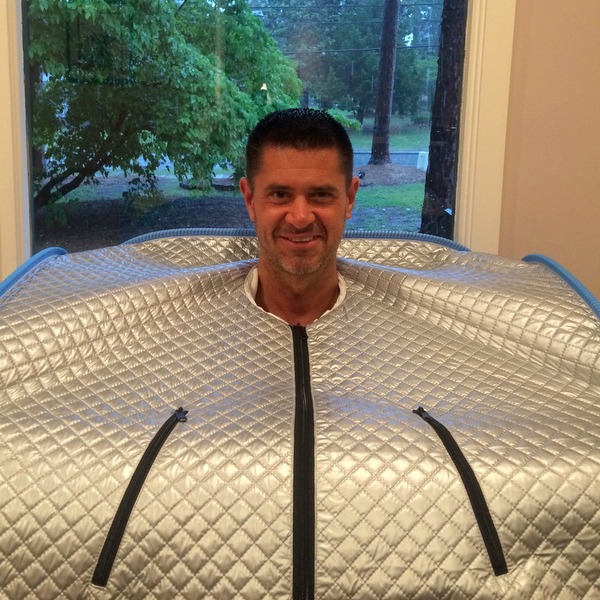I go to my acupuncturist a couple times a month for a treatment, but I visit her office a few times a week to use her infrared sauna. It helps loosen and relax my muscles that are tight and sore from living with dystonia, a neurological disorder I have had for 15 years. I’m only there for about 20 minutes, and while I talk to pretty much everyone, I recently learned that there is a lot more conversation going on than I was aware.
You see, this sauna is unique in that it’s in the waiting room where I can interact with other patients. It is also a funny-looking contraption so it attracts attention. I sit on a chair inside of what looks like a tent. My body is fully covered to let the infrared heat penetrate my muscles, and my head sticks out of the top. It’s bizarre looking, especially to those who never saw it before.
It didn’t take long for me to be known as the “floating head.” Everyone who walks in the office — from patients to caretakers to kids and even the postal carrier — either says something, asks something or at the very least smiles and/or laughs. It always sparks some sort of personal exchange.
People want to know what it is, how it works and how it helps me. This always leads to a conversation about dystonia and chronic pain, which I love to talk about because it increases awareness.
I recently learned that the conversation doesn’t end with me in the waiting room. My acupuncturist told me that when her patients go into the private treatment room, they ask her more about me, dystonia, chronic pain and why I use the sauna. This then gives her an opportunity to educate her patients even more about dystonia and chronic pain and how the infrared sauna helps. When people learn more about my story, they want to use the sauna for what ails them!
Little did I know that doing something for myself a few minutes a week would spark such an interest and help others. I love talking to people in general, and the funny-looking “floating head” in the waiting room is such an easy icebreaker that it breeds even more conversation. It’s hard to look at my silly head popping out of a “tent” and not say something, or at the very least, do a double take and break into a smile.
What I find so interesting about all of this is how I often go out of my way to educate others about dystonia and chronic pain, when sometimes all it takes is something incredibly simple, and often unintended, to appeal to the interest and curiosity of others. It serves as a reminder that when we live with any challenge in life, as long if we go about our business doing the right thing, not be ashamed of how we look or feel, smile, laugh and engage people, we will always make an impact on someone beyond ourselves!
September is Dystonia Awareness Month. To learn more about this neurological movement disorder, contact the Dystonia Medical Research Foundation. To sign the White House petition to have September formally recognized as Dystonia Awareness month, click here.

